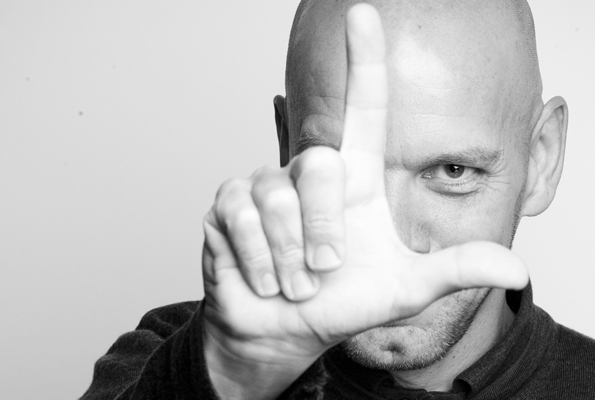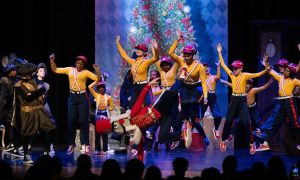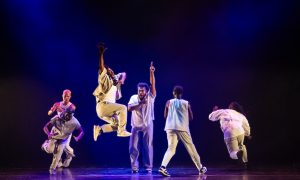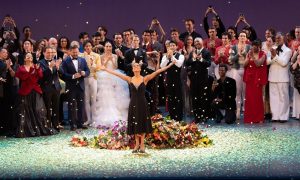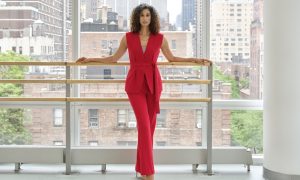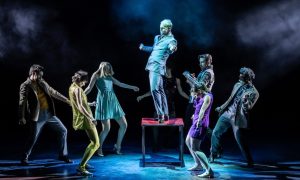By Dolce Fisher.
Acclaimed Finnish choreographer Kenneth Kvarnström was invited to commission a new work for Sydney Dance Company this year. The work titled Mercury premiered in November with rave reviews. Forging a choreographic career without any formal training in choreography, Kenneth was introduced to dance through amateur musical theatre, deciding to study dance in his gap year between high school and university. With a passion for dance ignited, Kenneth never looked back. One of Europe’s leading choreographers, Kenneth has directed the Helsinki City Theatre Dance Company and Dansens Hus in Stockholm, as well as his own K. Kvarnstrom & Co. Having also created works for Gothenburg Ballet, Helsinki Dance Company and Finnish National Ballet, Kenneth brought a unique creative energy to Sydney shores. During rehearsals Kenneth caught up with Dance Informa about the choreographic process behind his new work.
Do you use improvisation when forming your choreography?
“I like choreographing it all myself. With improv I am not good at giving tasks and getting the right thing out of the dancers. We will improvise for maybe five minutes and then I set the choreography. I still want to do all of the steps myself in order to find the tricks. I find where I want to fix things for the dancers. But it’s getting harder and harder as I am getting older. The dancers here are fantastic because I am showing them and they still understand what I want. There are some lifts I want to use from earlier productions but are too hard to explain, you just have to see them. So I have used video so the dancers can see.”

Kenneth Kvarnström with Sydney Dance Company dancers
Not being formally educated as a choreographer, which areas of choreography have been more difficult?
“It’s good and bad. It would be good to have some kind of education but it’s good to have your own way of doing things. I feel I have a lack of musical knowledge, but I am not afraid because I can still communicate with composers/conductors. I can’t read music. I would like to be able to read a musical score, but knowing how to communicate helps.”
How did you come up with the title ‘Mercury’?
“I actually had two other names, but ‘Mercury’ in a sense was easier as it didn’t say too much. The next thing was to give it a picture. That was what we did in the first week I was here. It all had to be prepared before I arrived. My idea was to make the dancers silver, but it didn’t really work. The final picture doesn’t say too much. I am not sure how it will work in the city landscape but people who know me have said it looks like my work.”
“We had finalised the name and then it was spring at home in Europe. I left the whole thing and didn’t think about it for a while. I just wondered about how I would make a dance for this. But for me it’s always important, according to the name, not to make it too obvious. You should leave something to fantasy and shouldn’t tell too much about the piece. So we have three different meanings with the piece divided in three different parts; Mercury is from Roman Mythology. Often the symbols he has are the wings on his hat. He is a messenger of the gods and he has a big stick with two snakes on it. That is the historical part, so we are using the big stick and feathers. Then we have quicksilver. That means constant movement. The last meaning is the planet Mercury. It is closest to the sun as you will see through the set design.”
You spent only a short time with the company on your first visit. Did you already have a few ideas?
“Yes, I had some ideas that I wanted to try. I was only here for ten days. The first week was OK because we were able to try a few things, but then I got tired of it (improvising) and decided to try to put it all together somehow. By the second week we were actually running a small section, and we kept most of it.”
How was this choreographic engagement different to others in the past?
“I accepted this work because it was such a good offer. You get nine weeks of constant work with the same people without all the distractions of other choreography. So this is a very unique experience. And also to be able to experience a new culture was great. Without a job here it would be very difficult to come here, as it is on the other side of the world. It was a very good opportunity to meet some new dancers and also to work with the company. The dancers are really fantastic as well as the whole team. Everyone here is so eager.”

Mercury, Sydney Dance Company. Photo: Jeff Busby
Has everything come together as you had planned?
“You have ideas and a structure when you go into the studio and meet the dancers. I think a lot is happening together with the dancers. Some ideas work, some don’t… you change and start from the beginning. I always work with different sections and then add them to each other. Doing so you can see what is missing. Maybe you have to add something or take something away. So more or less you are in a process that is changing. Half of the ideas I had when I started I never used, because they did not work. They were simply boring or did not fit in the new construction, etc. New dancers give new inspiration and the process itself gives new ideas. In the final week in the theatre and after the first preview we made some changes… actually we cut out five minutes of dance. I think it has been a good process.”
…And the audience agreed. Mercury is an outstanding new work, showcasing both Kvarnström’s brilliance and the dancers versatility and talent. To read Dance Informa’s review of Mercury click here.
Kvarnström has recently been appointed as Artistic Director of Helsinki Dance Company and will begin as director in 2010.


